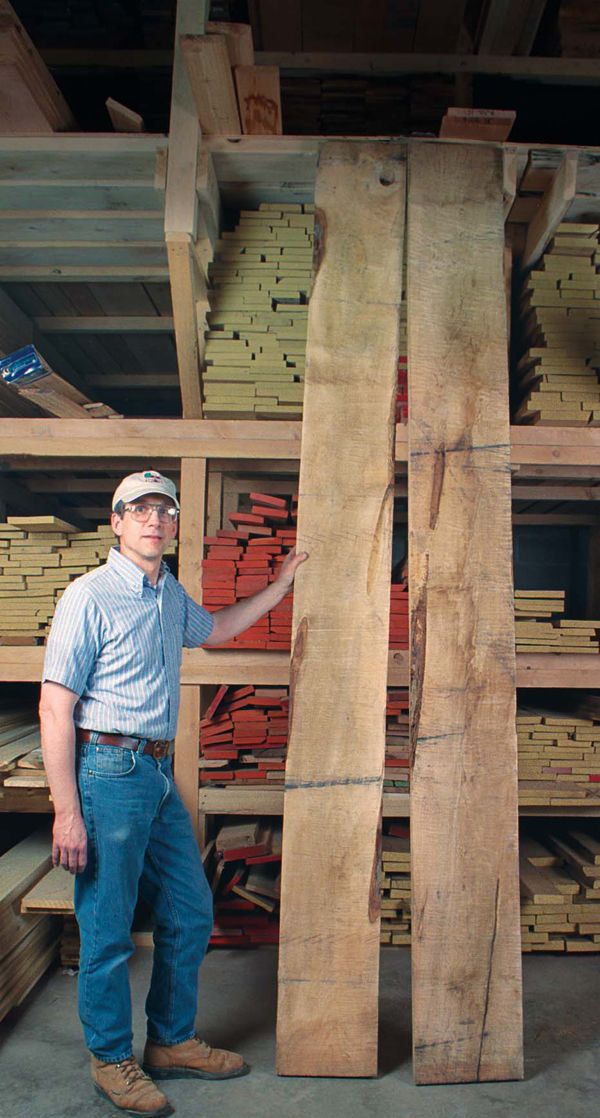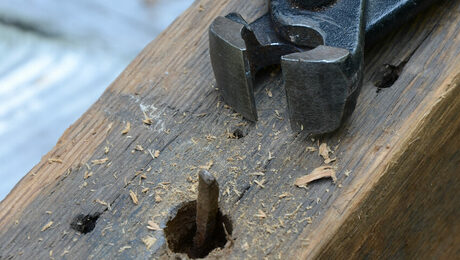Lumberyard sleuth
Telltale signs to match and find wood that all came from one tree.
Synopsis: Finding entire logs to saw up isn’t always a realistic option for most woodworkers. Fortunately, there are ways to find boards from the same tree at your local lumberyard to ensure that you have matching color and figure for all the parts of a project. All it takes is a bit of patience and knowing what clues to look for, and Cliff Scott explains how to do that. He outlines four key clues to identifying familiar boards and explains how the lumberyard owner can help. He also reveals how wood gets reshuffled at the mill.
In my early days at woodworking, I’d buy the board feet of lumber I needed for a project, build the piece and be on my way. As my knowledge of woodworking increased and my artistic side developed, I became more particular about which boards were placed together. Return trips to the lumberyard were frequently needed after planing the roughsawn lumber and finding that the color and grain didn’t match. This caused a considerable waste of time and lumber.
I discovered the joy of making furniture with wood from a single log after I purchased some cherry from an individual who had cut down a tree on his property. This wood was completely uniform in color. It was easy to match boards for the drawer fronts, sides and top. Now I aim to use lumber from the same tree for every project.
Finding entire logs to saw up, however, isn’t always a realistic option. Buying a whole tree is a large initial outlay, and air-drying lumber takes considerable time, assuming you have the space required. Fortunately, there are ways to find boards from the same tree at your local lumberyard. All it takes is a bit of patience and knowing what clues to look for.
The four key clues
When identifying boards that may come from the same tree, I look for four things: significant natural marks in the wood, marks made at the sawmill, grain pattern and color.
Distinguishing marks
When you stand boards on end next to each other, significant marks, such as knots, splits or dark streaks, usually stand out. Notice the width of the boards. Check whether the end is cut at an uneven angle. When boards have a combination of heartwood and sapwood, look for similar growth patterns.
An obvious large knot may pass through three or more boards, making them easy to match, while a small knot may show up on only one side of a board. Don’t assume that the boards don’t go together just because one has a knot and the other doesn’t. Turn the boards around and upside down until you are sure there is no match, then set them aside.
Grain pattern
You can identify matching boards by looking at how the grain swirls or runs at a particular angle, and if it is excessively tight or loosely figured. Notice whether the grain is flatsawn or quartersawn. Once you have narrowed your selection, checking the end grain for growth rings can sometimes show in what order the boards were cut. One trick for finding curly grain is to shine a light diagonally down the edge of a board, which reveals the corrugated effect.
For the full article, download the PDF below:
Fine Woodworking Recommended Products

AnchorSeal Log and Lumber End-Grain Sealer

Starrett 12-in. combination square






















Log in or create an account to post a comment.
Sign up Log in